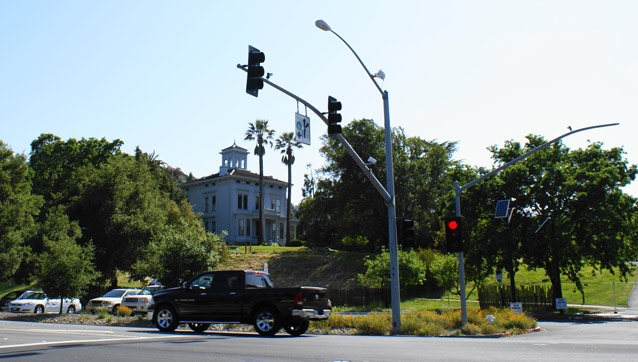
NPS Photo/V. Germano
John Muir National Historic Site
Martinez, California
At the northern edge of Contra Costa County, along Highway 4, there is a property that people pass by daily on their commute to work. For many, they may not notice the large Italianate house, the orchard, or the adobe house, or if they do, many never have taken the time to exit and take a look at what lays inside the gates.
The John Muir National Historic Site tells the history of John Muir, the conservationist who lived at this farm for decades until his death in 1914. Muir, most notably known as the leader of the national conservation movement and proponent of national parks, became business partner of settler John Strentzel in the 1880s and helped manage the already successful farm. The farm, however, didn't start with Strentzel.
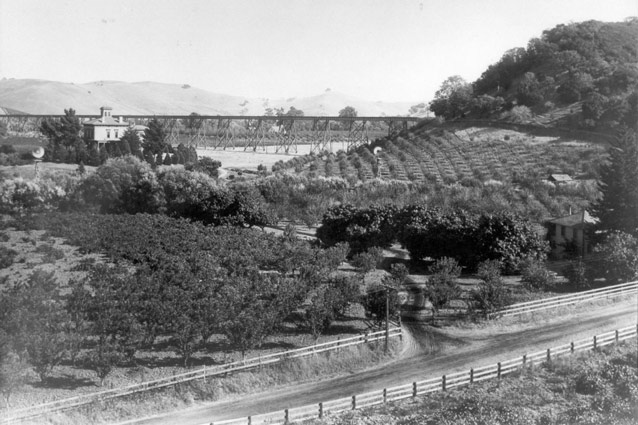
NPS/John Muir National Historic Site Archives (F13, Fr. #645, Holt-Atherton)
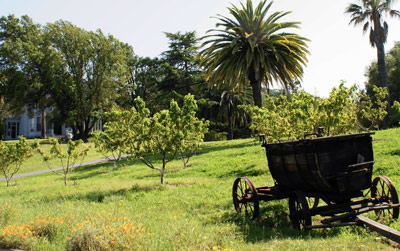
NPS Photo/V. Germano
The Strentzel family lived in the adobe until 1882, when the larger Italianate-style house on the property was constructed and became the primary residence. The adobe house stands just to the west of the primary house, along the property's main road, with orchards and vineyards between the two houses.
The Muir site tells the history of the State of California through agriculture and architecture. The original house, an adobe that is characteristic of its day, was surrounded by agricultural crops and rolling hills where cattle grazed during the days of Mexican settlement of California. By the time gold was discovered in 1849, settlers bought Mexican land holdings at record pace, such as when Strentzel bought Martinez’s property.
Through the years, the land was intensely developed with a new larger house, outbuildings, and varieties of crops. Similar to farms throughout the Bay Area, the Strentzel-Muir partnership produced grain crops, pears, apples, cherries, figs, olives, oranges, peaches, pecans, plums, quinces, walnuts, and even introduced Muscat grapes.
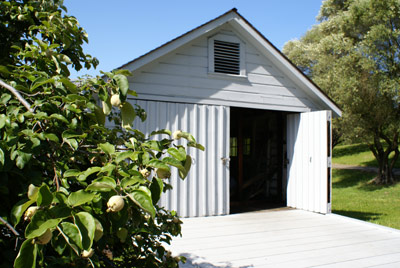
NPS Photo/V. Germano
While the scale of agriculture and even the houses grew in size, the connection to the land was just as intense in both the Mexican and American periods of time. In both, the families drew from their knowledge of building techniques and agricultural know how to feed and shelter their families. The two periods diverge when Muir lived on the property and ran a successful farm in order to write and travel to conserve natural areas. Muir received some of that inspiration while hiking the hills of his property, at Mount Wanda, just south of the house.
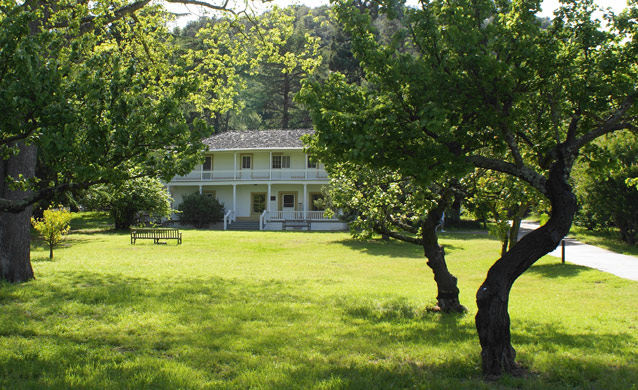
NPS Photo/V. Germano
The story of Muir's life is one that is recognized throughout the country, although many commute by his residence every day without knowing what they are passing by. The story of the Mexican rancho is one that many who do visit the Muir site think little about. It was the same orchards and vineyards that Muir used to feed his family, and in the same adobe that both families used while living on the farm. The agriculture and architecture that can be seen from the freeway tells the story of California- just as the freeway running through the middle of a National Historic Site adds to that story and brings history to the present. What was once an easy task of walking from the house to the farm fields, to the open rolling hills, now takes a bit of planning and patience trekking under the freeway to experience these areas that have always been one property and one common history.
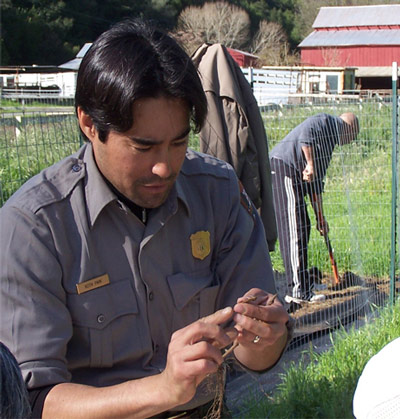
NPS Photo/John Muir National Historic Site staff
The adobe house now serves as one of the visitor centers for the Juan Bautista de Anza National Historic Trail; the trail that Mexican settlers blazed from Mexico through Arizona and ended in the San Francisco Bay Area of California. The trail is another property that is hidden in plain sight, and can be seen experienced by car along many major freeway routes throughout the state.
Today, the park is actively restoring the orchards and ornamental vegetation throughout the site. As visitor’s walk the interpretive trail, they can see the restored peach and apple orchards. And, at the site of John Muir’s grave, is the pear orchard that has been cloned by the park’s horticulturalist, Keith Park.
Visiting this Landscape
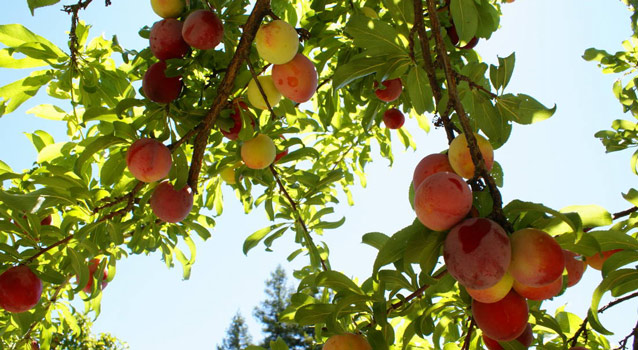
NPS Photo/V. Germano
Find up-to-date events, more about John Muir, and information to help plan your visit at the John Muir National Historic Site website.
Contact: (925) 228-8860
Guided Tours: A mobile phone-guided tour of the orchards is available at (925) 232-2006, wtith interpretive stops throughout the grounds. Visitors are also welcome to explore the home, orchard, gardens, and hills on their own. Information about the Juan Bautista de Anza National Historic Trail is available at the visitor center in the Martinez Adobe.
Fees: Free
Access: The site is open to the public seven days a week from 10:00 AM to 5:00 PM. Mt. Wanda is open everyday from sunrise until sunset.
Last updated: August 16, 2017
